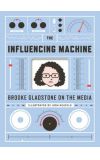
12 Jun 2011 03:48:05
The only problem, as radio host Brooke Gladstone points out in her new book, is that the good ol' days were never as good as we like to believe.
In "The Influencing Machine: Brooke Gladstone on the Media," she traces the industry's history from ancient times to the colonial era to the present. Her conclusions: The media have always been imperfect, and we consumers are partly to blame because they're only giving us what we demand.
In other words, we get the media we deserve.
Her argument is compelling, the history enlightening. But what makes the book so notable is its style. It's presented almost entirely in drawings, like a textbook in comic-book or graphic-novel form. The drawings by Josh Neufeld are definitely good, but the question is whether they're so good they distract from the content of the book.
The text is mainly in the form of cartoon dialogue bubbles from an animated Gladstone. She explains how the Founding Fathers used the press for political means. She describes how journalists published misinformation or outright lies that eventually influenced legislation or war policies. And she shows how advances in technology — the Internet, tweeting, citizen journalism — seem like they'd lead to an improved media but don't — because human flaws are the real root of the problem.
Gladstone's arguments are classic Journalism 101, presented in convincing and easily digestible fashion. Some lessons are directed at media consumers, explaining that their willingness to accept a certain level of bias and bluster removes the incentive for news outlets to raise their standards. Other lessons are for journalists, reminding them of forms of bias that can creep into their writing unless they remain vigilant.
It's not just the book's written words that deliver her message. The animation lends a comforting tone that makes readers feel as though Gladstone is speaking directly to them. But sometimes the animation threatens to mute those messages. While animation in comic books might provide context that adds to the action, these drawings sometimes provide humor or eye candy that draws enough attention that the reader has to reread the previous dialogue bubble to return to Gladstone's train of thought.
Distractions aside, Gladstone still tells a compelling story. It's easy to imagine "The Influencing Machine" becoming mandatory reading in journalism classes around the country.

